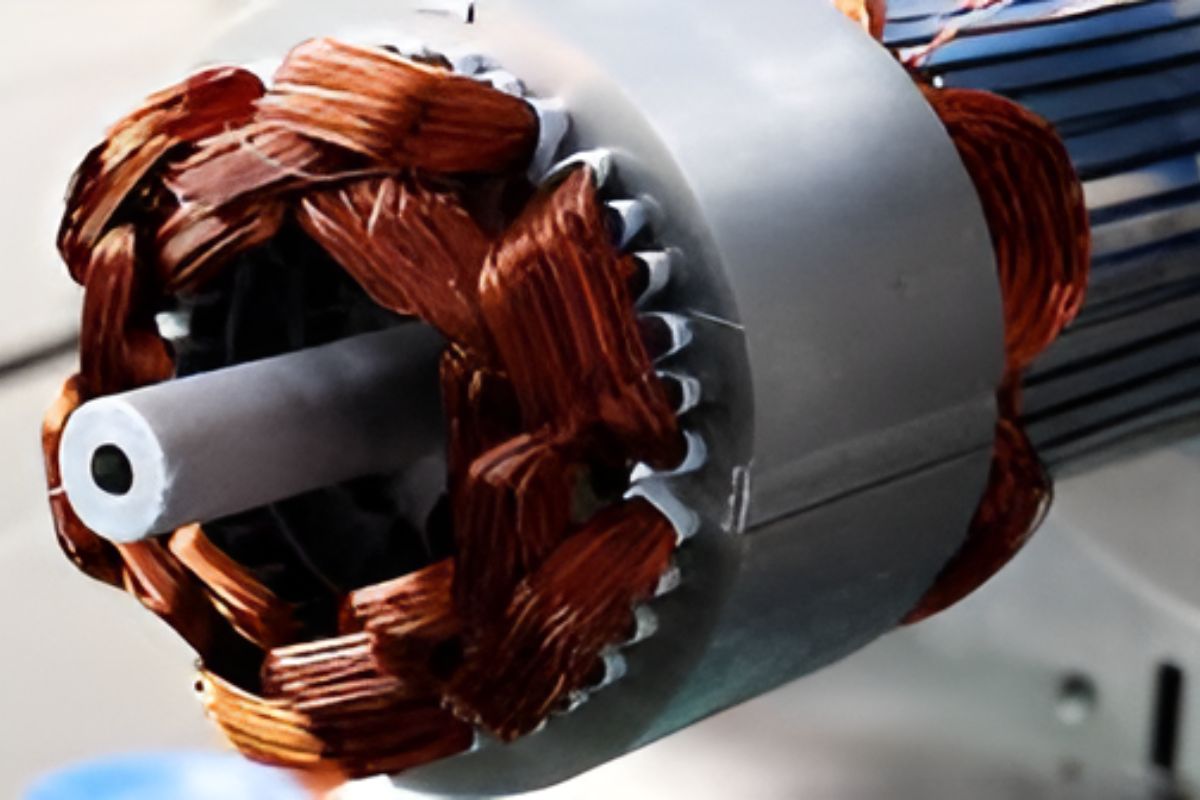

Driven by the rising acceptance of energy-efficient motors across many sectors and the spike in demand for electric vehicles (EVs), the global industry is seeing an amazing rise. The market for electric motors is expected to grow at a Compound Annual Growth Rate (CAGR) of 5.3%, thereby reaching around USD 197.89 billion by 2032. Its expected value by 2023 will be USD 124.33 billion. The main advantages, industry advances, driving forces, market segmentation, regional insights, and future vision of the electric motor market are examined in this paper.
From domestic appliances to industrial gear and electric cars, electric motors are vital parts in many different kinds of applications. Many systems and tools function on their conversion of electrical energy into mechanical energy. With so many variations—AC motors, DC motors, servo motors, stepper motors—each meeting different demands and sectors—the electric motors market is wide.
Extremely effective in turning electrical energy into mechanical power, electric motors help to lower running expenses and energy usage. This efficiency is particularly crucial in sectors whose running costs largely depend on energy.
Low maintenance is: Electric motors market reduce maintenance needs and extend operational lifetime by including fewer moving components than internal combustion engines and other mechanical systems.
Environmental Impact: As they emit nothing running, electric motors are a green choice particularly when run on renewable energy sources.
Versatility and adaptability From little domestic appliances to big industrial machinery and electric automobiles, electric motors prove their adaptability and flexibility throughout a broad range of uses.
New developments in motor design and materials—including better insulating materials and permanent magnets—have enhanced the efficiency and performance of electric motors. Also becoming very common are smart motors, which include sensors and predictive maintenance control systems.
Acceptance of electric cars: The growth of electric cars (EVs) has underlined the need for electric motors very significantly. The automobile industry is largely in charge of market expansion as EVs depend on constant and efficient electric motors to translate mechanical motion into electrical energy.
Systems include wind turbines mostly depending on electric motors and solar panel tracking systems. Even more demand for electric motors is resulting from increasing investments in renewable energy projects.
Especially in robots, conveyors, and automated manufacturing lines, electric motors are becoming increasingly crucial as the use of automation in other sectors grows. Important in automated systems are flawless control and great efficiency offered by electric motors.
Rising demand for energy-efficient electric motors as businesses and governments all over target improved energy efficiency to lower carbon footprints and expenses. High-efficiency motors are partially embraced by regulations such as the EU’s Ecodesign Directive and the motor efficiency standards of the U.S. Department of Energy.
Transportation Electrification The global drive toward electric automobiles (EVs) is a fundamental determinant of the electric motor business in transportation. Environmental regulations and customer demand for better transportation choices drive governments and companies, especially toward electric vehicle technologies.
As fast development in developing nations—especially in the Asia Pacific and Latin America powers drives—demand for electric motors is rising. The increasing mining, building, and industrial activity in these areas creates significant chances for market growth.
Technological Advancements in Motor Equipment: Using constant advances in motor design, materials, and manufacturing techniques, the efficiency and performance of electric motors are increasing, attracting a wider spectrum of applications.
Initially, buying and installing electric motor market —especially ones with sophisticated characteristics like excellent efficiency or smart capabilities—may be expensive. Small and medium-sized companies (SMEs) as well as markets with cost sensitivity have a great difficulty here.
Less expensive substances’ availability: Sometimes, particularly in cases where initial expenses are a big factor, less expensive options such as hydraulic or pneumatic systems might be applied over electric motors.
Integration of electric motors into sophisticated systems such as automated production lines or electric cars calls for significant technological knowledge. This might make it challenging in areas without appropriate manpower or enough technical infrastructure.
Two important raw materials used in the production of electric motors, copper and rare earth elements, can have somewhat different pricing. The erratic nature of this can influence electric motor price policies and manufacturing costs.
On the market for electric motors, the COVID-19 epidemic has opposite consequences. Early phases of the epidemic caused disruptions in supply chains and a slowing down of production activity, but as businesses adjusted to the new reality the demand for electric motors recovered quickly. The market for electric motors has benefited from the drive toward automation and the fast acceptance of electric cars during the pandemic.
The epidemic also underlined the need for localizing supply chains, which can create more demand for electric motors and therefore more investment in home industries.
One might classify the market for electric motors depending on Type: AC, DC, Servo, Stepper, and Others motors.
Add residential appliances, HVAC systems, electric cars, industrial machinery, and others here.
Industry End User: Automotive, manufacturing, aerospace, healthcare, and consumer electronics together define the end-user sector.
Area: Latin America; North America, Europe; Asia Pacific; Middle East and Africa.
Especially with electric cars, the increasing attention on lowering carbon emissions and improving fuel economy is boosting acceptance of electric motors in the automotive industry.
As sectors keep using automation technologies to boost output and lower operational costs, demand for electric motors is rising.
Development in the Renewable Energy Sector: Electric motors specify completely uses like manufacturing of solar and wind energies. Smart Motors’ emergence: Demand for electric motors is driving rising popularity of smart motors with IoT connectivity and embedded sensors, which enable predictive maintenance and real-time monitoring, so improving operating efficiency and lowering downtime.
Strong presence of the automotive and aerospace sectors as well as increasing focus on energy economy and sustainability drive the North American electric motor industry. Leading markets in this arena are those of American and Canadian character.
Europe is a big market for electric motor market mostly due to strict environmental laws and a great focus on energy economy. Important players driving market development in this industry are the United Kingdom, France, and Germany.
Driven by fast industrialization, expanding automobile production, and increasing investments in renewable energy, the Asia Pacific area is predicted to see the highest expansion over the projection period. Main markets in this area include China, Japan, and India.
Driven by the expansion of the industrial sector and rising consciousness of energy efficiency and automation, Latin America and the Middle East & Africa are showing constant rise.
By providing economically priced, energy-efficient electric motor solutions, companies might gain from the expanding industrial base in underdeveloped nations.
Especially in the evolution of motors with higher efficiency, less weight, and better durability, electric motor technology offers significant future opportunities for inventiveness.
There is chance to highlight electric motors as a greener alternative for more conventional mechanical systems as businesses keep addressing sustainability.
Initial Expenses: Particularly in SMEs and price-sensitive sectors, the high initial cost of complicated electric motors might turn off some.
Technical Skill and Integration Including electric motors into intricate systems calls for a great degree of technical knowledge, which could be difficult in sectors lacking trained workforce.
By providing competitive benefits in some uses, other technologies like as hydraulic or pneumatic systems might threaten the acceptance of electric motors.
Many businesses have created new electric motor market with creative technologies including low weight, great efficiency, and smart capabilities to meet changing consumer demands.
To increase the market awareness of their goods and improve their services, important firms are forming strategic alliances and cooperation.
funding for research and development Focusing smart capabilities and energy efficiency, companies are greatly funding research and development to improve electric motor technology.
Driven by rising demand for energy-efficient solutions, the development of electric autos, and the expansion of industrial automation, the worldwide electric motor sector is positioned for consistent increase over the next 10 years. Projected CAGR of 5.3% and a market size of USD 197.89 billion by 2032 provide different chances for innovation and development in this industry. Companies which provide customer-centric solutions, sustainability, and technological innovation high priority will most likely thrive in this changing market.
Mostly, the worldwide electric motor market consists of
There are lots of chances for innovation and development in the worldwide electric motor market industry. Important sectors like automotive, industrial, and renewable energy want more therefore the market is predicted to grow gradually. The priority for companies offering customer-centric solutions, sustainability, and technical innovation will most likely be their survival in this changing climate.
Driven by growing needs for sustainable and energy-efficient solutions as well as expanding applications in many various sectors, the worldwide electric motor industry is most likely to rise significantly over the next ten years. A projected CAGR of 5.3% and a market size of USD 197.89 billion by 2032 provide the market with various opportunities for development, innovation, and investment. Companies have to adjust to changing market dynamics, technology developments, and consumer expectations since the sector is always shifting to be competitive.